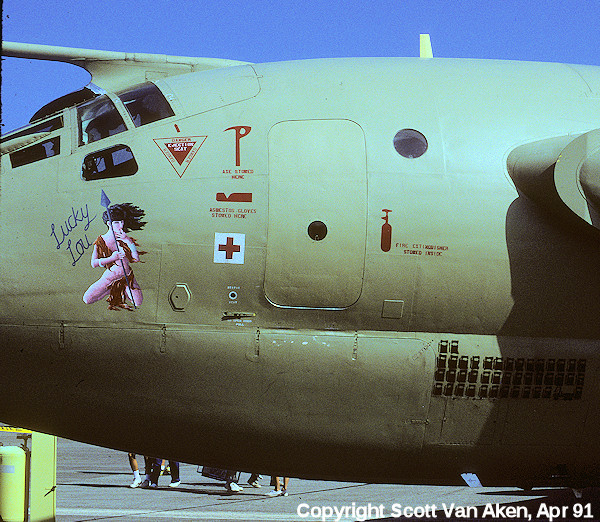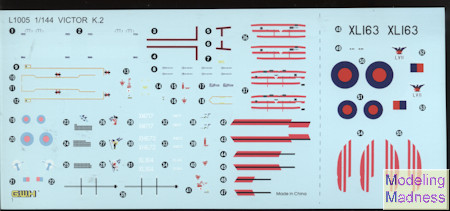
GWH 1/144 Victor K.2
| KIT #: | L 1005 |
| PRICE: | $54.99 SRP |
| DECALS: | Four options |
| REVIEWER: | Scott Van Aken |
| NOTES: |

| HISTORY |
The Handley Page Victor was a British jet-powered strategic bomber, developed and produced by the Handley Page Aircraft Company, which served during the Cold War. It was the third and final of the V-bombers operated by the Royal Air Force (RAF), the other two V-bombers being the Avro Vulcan and the Vickers Valiant. The Victor had been developed to perform as part of the United Kingdom’s airborne nuclear deterrent. In 1968, the type was retired from the nuclear mission following the discovery of fatigue cracks, which had been exacerbated by the RAF's adoption of a low-altitude flight profile to avoid interception.
A number of Victors had received modifications to undertake the strategic reconnaissance role, employing a combination of radar, cameras, and other sensors. As the nuclear deterrence mission was given to the Royal Navy's submarine-launched Polaris missiles in 1969, a large V-bomber fleet was deemed surplus to requirements. Consequently, many of the surviving Victors were converted into aerial refuelling tankers. During the Falklands War, Victor tankers were notably used in the airborne logistics operation to repeatedly refuel Vulcan bombers on their way to and from the Black Buck raids.
The Victor was the last of the V-bombers to be retired, the final aircraft being removed from service on 15 October 1993. In its refueling role, the type had been replaced by the Vickers VC10 and the Lockheed Tristar. It was this success as a tanker that allowed the Victor to outlast its compatriots.
| THE KIT |
![]() The Victor has been fairly well represented in plastic over the decades with early kits by Lindberg and Frog as well as Matchbox and more recently Anigrand. These kits were of various scales with the Anigrand resin kit being in the same scale as this kit; 1/144.
The Victor has been fairly well represented in plastic over the decades with early kits by Lindberg and Frog as well as Matchbox and more recently Anigrand. These kits were of various scales with the Anigrand resin kit being in the same scale as this kit; 1/144.

 shows at least the upper color (the lower being invisible thanks to the angle of the sun). Lucky Lou, Saucy Sal, and Maid Marian are the three similarly painted planes offered. These are all from 55 Squadron. The fourth scheme is a 57 Squadron plane in the older Dark Green, Medium Sea Grey Grey over Light Aircraft Grey scheme. This scheme includes the wing stripes that are absent in the Hemp painted planes. The tail badge for this plane was rather infrequently seen on Victors in this scheme, the 57 in a white circle being much more common. The decal sheet is very nicely done and while the decals feel a bit thick, they should work very well.
shows at least the upper color (the lower being invisible thanks to the angle of the sun). Lucky Lou, Saucy Sal, and Maid Marian are the three similarly painted planes offered. These are all from 55 Squadron. The fourth scheme is a 57 Squadron plane in the older Dark Green, Medium Sea Grey Grey over Light Aircraft Grey scheme. This scheme includes the wing stripes that are absent in the Hemp painted planes. The tail badge for this plane was rather infrequently seen on Victors in this scheme, the 57 in a white circle being much more common. The decal sheet is very nicely done and while the decals feel a bit thick, they should work very well.
| CONCLUSIONS |
| REFERENCES |
Thanks to Great Wall Hobby for the preview kit. Get yours at your local retailer.
Back to the Previews Index Page